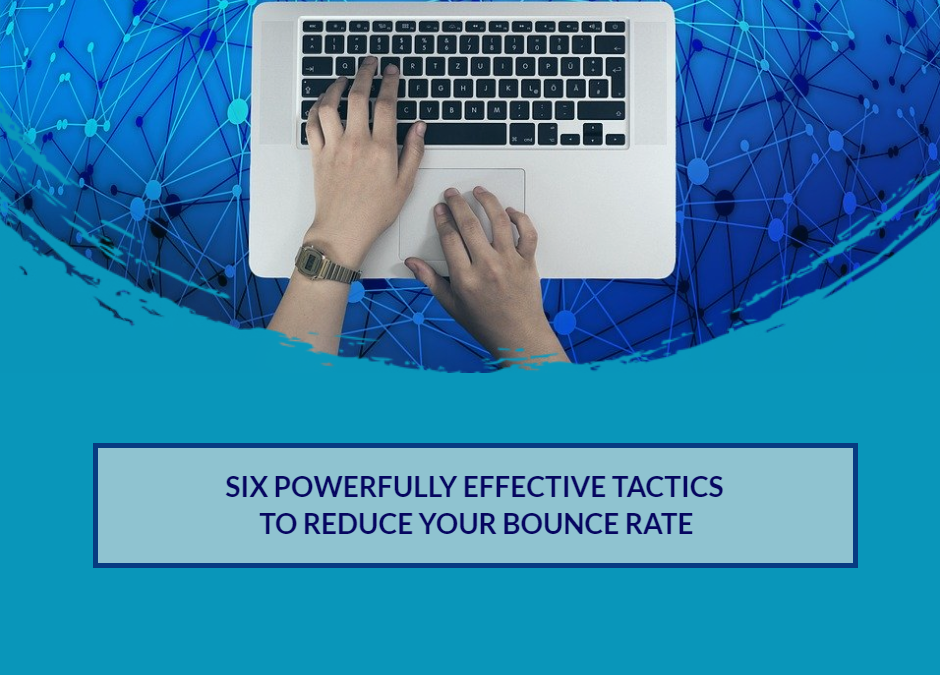This is a post by contributing author Frank McKinley. Today he shares with us how you can reduce your bounce rate and present content the way people like to read it.
You’ve only got ten seconds.
The Nielsen Norman Group says that’s how long most website visits last.
Your bounce rate is the percentage of visitors who leave after viewing one page. If it’s high, it’s because you haven’t engaged them or made it easy to read your content.
In this post, we’ll cover six tactics for presenting your content the way people read it on the Web.
We read web copy differently than printed material.
When you sit down with a book, you probably grab a cup of coffee and spend 10 or 20 minutes reading it.
Print is easier on your eyes. You don’t have hyperlinks to draw you away. You just want to relax, be entertained, learn something, or escape.
On the web, we’re looking for information. So we scan pages we find to see if it’s worth our time. The lighted screen is harder on our eyes, so we want to get this done quick.
If we get bored, we check Facebook, email, or that link on the sidebar.
The Six Elements of Attractive Web Pages
The best web writers make it easy for visitors to find what they want..
Consider this.
- 16 percent of website visitors read every single word.
- 79 percent scan.
- The other five clicked on your site by mistake.
Keep it short, to the point, and highly useful.
Tactic #1 – Highlight your keywords.
Keywords are the search terms your readers use. Research the best ones and put them in strategic places on your pages.
You can highlight them by:
- Adding a hyperlink to them
- Changing the typeface to bold or italic
- Using them in headings
Tactic #2 – Use meaningful subheads.
Many television ads are clever. They make you laugh, smile, or groan.
You don’t have that luxury. Be direct. Make your point quickly.
First impressions matter more here than anywhere.
Which is better?
- A comprehensive solution that addresses metrics in every competency area of associate behavior.
- An easy way to measure employee performance.
B gets to the point without the heavy jargon. Simple words please tired eyes, and get the job done.
Besides, clear is really clever.
Tactic #3 – Use bullet lists.
If you’re writing about your five favorite places in the world, don’t just separate them with commas in a sentence.
Make a list like this one:
- New York City
- Chicago
- Paris
- London
- Savannah
That’s easier on the eyes than New York City, Chicago, Paris, London, and Savannah, isn’t it?
Give people’s eyes a break and bullet every list.
Tactic #4 – Have one idea per paragraph.
Your English teacher was right about this one.
Things have changed since the stories in your literature books were written. 200 years ago there was no TV to reduce our attention spans. Farmers put books on their plows and could endure long prose sessions.
Those days are long gone and thanks to the World Wide Web, they’ll never return.
Your first sentence tells the reader what the paragraph is about. The following sentences support the first. If you need to branch off into something else, start a new paragraph.
Otherwise, you’ll confuse your reader and they’ll click away.
Tactic #5 – Write like a journalist.
News writers use the inverted pyramid to communicate.
You start with the juiciest information first. Then you add details that decrease in importance the further along you go. That way you don’t “bury the lede.”
It’s tempting to hold back the best part until the end. Don’t. Hit reader’s hard right from the start. That way if they don’t stay until the end they’ll still get to what matters.
Be objective. Promotional material puts a cognitive burden on your readers. When you add hyperbole, readers have to sift through your words to separate opinions from facts. That’s tiring, and it’s a subtle invitation to go elsewhere.
Tactic #6 – Cut your word count in half.
How much can you read in 10 seconds?
Keep that in mind when you use these tactics. People won’t read your words until they’ve read your headings. They won’t click on your post until they’ve been hooked by your headline. They can’t see what’s in your paragraphs if you don’t format them for easy reading.
Use these tactics and your web pages will be a pleasure to read.
And your bounce rate will be lower, too.

